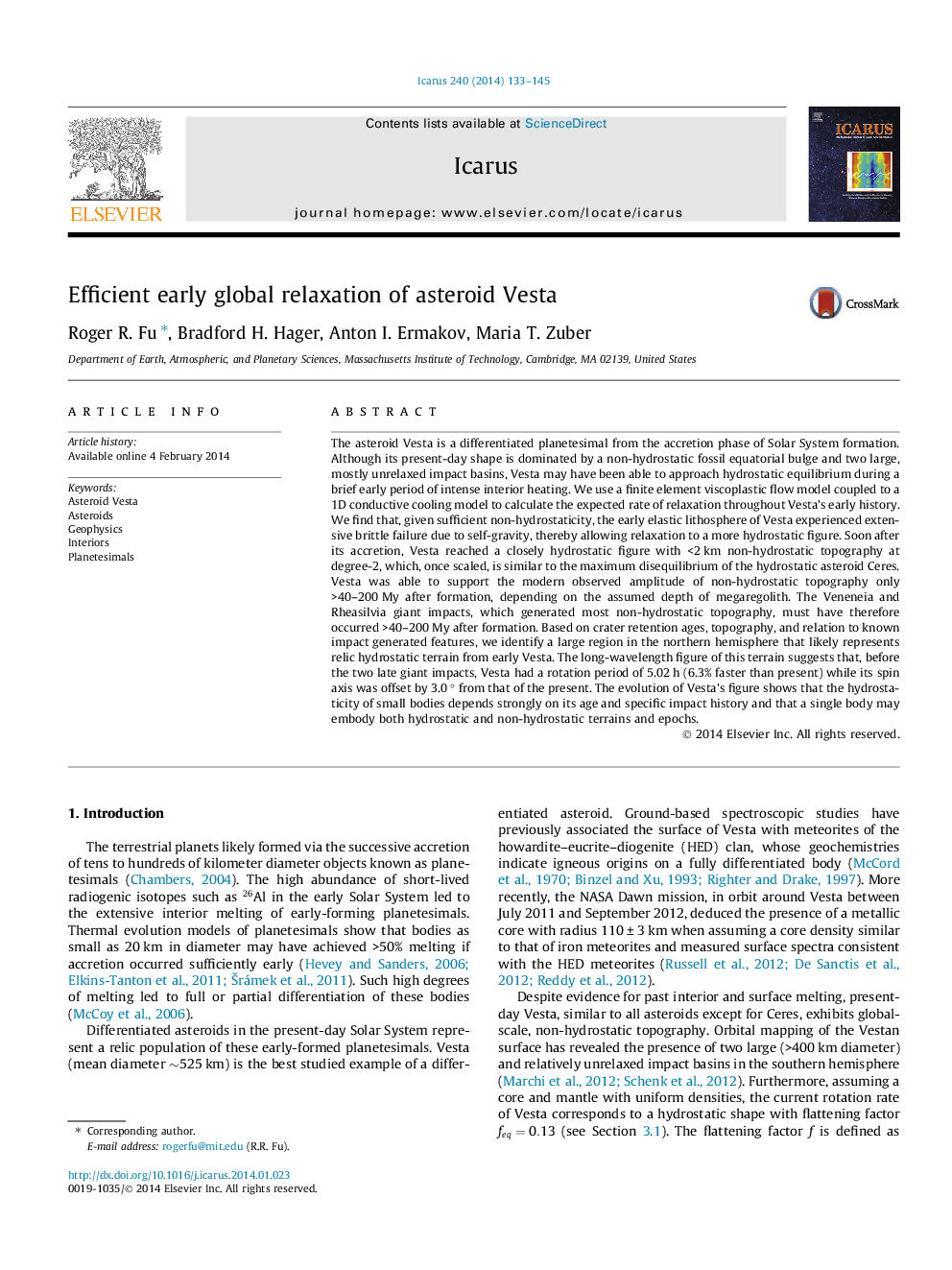| کد مقاله | کد نشریه | سال انتشار | مقاله انگلیسی | نسخه تمام متن |
|---|---|---|---|---|
| 1773071 | 1523550 | 2014 | 13 صفحه PDF | دانلود رایگان |
The asteroid Vesta is a differentiated planetesimal from the accretion phase of Solar System formation. Although its present-day shape is dominated by a non-hydrostatic fossil equatorial bulge and two large, mostly unrelaxed impact basins, Vesta may have been able to approach hydrostatic equilibrium during a brief early period of intense interior heating. We use a finite element viscoplastic flow model coupled to a 1D conductive cooling model to calculate the expected rate of relaxation throughout Vesta’s early history. We find that, given sufficient non-hydrostaticity, the early elastic lithosphere of Vesta experienced extensive brittle failure due to self-gravity, thereby allowing relaxation to a more hydrostatic figure. Soon after its accretion, Vesta reached a closely hydrostatic figure with <2 km non-hydrostatic topography at degree-2, which, once scaled, is similar to the maximum disequilibrium of the hydrostatic asteroid Ceres. Vesta was able to support the modern observed amplitude of non-hydrostatic topography only >40–200 My after formation, depending on the assumed depth of megaregolith. The Veneneia and Rheasilvia giant impacts, which generated most non-hydrostatic topography, must have therefore occurred >40–200 My after formation. Based on crater retention ages, topography, and relation to known impact generated features, we identify a large region in the northern hemisphere that likely represents relic hydrostatic terrain from early Vesta. The long-wavelength figure of this terrain suggests that, before the two late giant impacts, Vesta had a rotation period of 5.02 h (6.3% faster than present) while its spin axis was offset by 3.0 ° from that of the present. The evolution of Vesta’s figure shows that the hydrostaticity of small bodies depends strongly on its age and specific impact history and that a single body may embody both hydrostatic and non-hydrostatic terrains and epochs.
Journal: Icarus - Volume 240, 15 September 2014, Pages 133–145
